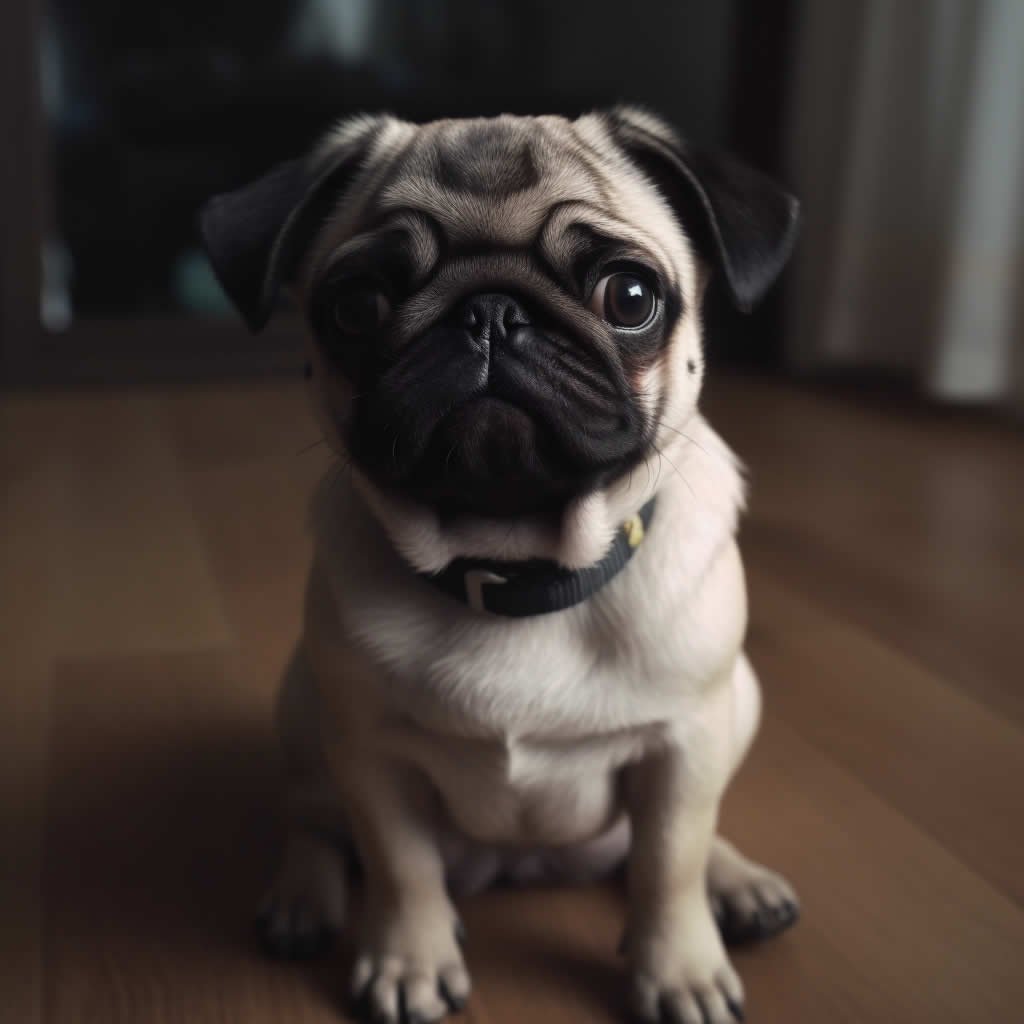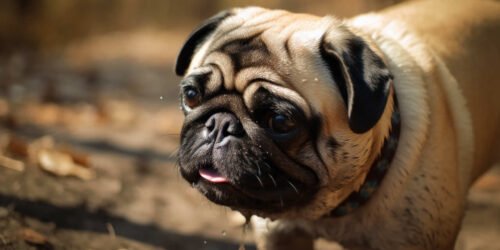Why is My Pug So Small?
Introduction
Are you curious about why your adorable pug is smaller than the average canine companion? Pugs are fascinating little creatures with a rich history, primarily bred for their size and affectionate demeanour.
In this blog post, we’ll explore the role of genetics, health conditions, breeding practices, and other factors that contribute to your beloved pug’s unique size.

Table of Contents
- Introduction
- Genetics And Breeding
- Health Conditions Affecting Pug Size
- Embracing Your Pug’s Unique Size And Personality
- Conclusion
- Frequently Asked Questions
Genetics And Breeding
Genetics play a significant role in determining the size of pugs, with certain genetic mutations affecting their growth and development.
The Role Of Genetics In Pug Size
As a pug enthusiast, I’ve often wondered about the factors that make these adorable dogs so small. One of the key factors contributing to their petite stature lies in their genetics.
Interestingly enough, scientists have discovered a mutation behind pugs’ flat faces, which also affects their size.
Delving deeper into canine genetics reveals that certain genetic material found in distantly related breeds from distant regions may also play a role in the small size of some dog breeds including pugs.
To understand why your pet Pug might be smaller than average, consider its lineage and ancestry – after all, Pugs are an ancient breed with roots dating back to 400 B.C. in China! They were originally bred as companions for Chinese nobility and sought-after for their endearing size and affectionate nature.
It’s important to note that limited genetic diversity is common among dog breeds like Pugs since they descend from a focused group of founders created by crossing closely related individuals.
The Effects Of Inbreeding
As a pug enthusiast, I’ve come across the consequences of inbreeding on numerous occasions. Inbreeding occurs when two closely related dogs are bred together, often with the intent to preserve or enhance specific desired traits in their offspring.
One concerning consequence of inbreeding is the increased risk of health issues and defects. For instance, some pugs might suffer from dysfunctional organs or cosmetic problems due to inbreeding (fact 1).
Additionally, their immune system function may decrease (fact 2), making them more susceptible to illnesses and infections. A study even showed that smaller, less-inbred breeds tend to be healthier than larger, more-inbred ones (fact 3).
Furthermore, these negative genetic impacts can result in reduced adult size and poor growth among pugs (fact 5).
Health Conditions Affecting Pug Size
Certain health conditions can contribute to a pug’s smaller size, such as liver shunts, heart problems, and breathing difficulties.
Common Health Issues That Cause Smaller Size
As a pug enthusiast, I’m aware that there are several health conditions that might contribute to your pug’s smaller size. Some of the common health issues that may cause a smaller stature in pugs include:
- Legg-Calvé-Perthes Disease: This is a condition where the blood supply to the head of the femur is reduced, resulting in bone and joint inflammation and potentially stunted growth.
- Encephalitis: An inflammation of the brain can impact various aspects of your pug’s development, including its overall size.
- Brachycephalic Airway Obstruction Syndrome (BAOS): Pugs are prone to this respiratory issue due to their reduced skull length, which can also affect other aspects of their growth.
- Obesity: While it may seem counterintuitive, obesity can actually lead to an underdeveloped skeletal structure in dogs, making them appear smaller overall.
- Hormonal imbalances: Imbalances in hormones such as thyroid levels can also affect your pug’s growth and development.
- Nutritional deficiencies: A lack of proper nutrients during key developmental stages can result in a smaller stature for your pet as well.
- Growth plate disorders: Abnormalities or injuries in your pug’s growing bones could lead to uneven or stunted growth patterns.
- Genetic predisposition: Some pugs may simply have genes that result in a naturally smaller size compared to others within their breed.
By understanding these potential factors contributing to your pet’s small size, you’ll be better equipped to address any underlying health concerns and ensure they receive proper care tailored to their unique needs.
Embracing Your Pug’s Unique Size And Personality
As a proud Pug owner, it’s essential to realise and embrace the unique size and personalities of these lovable pups. Although their small stature may make them suitable for apartment living, it also means they need plenty of exercise to avoid becoming overweight.
Personality-wise, Pugs can range from laidback lap dogs to energetic goofballs. They thrive on affection and attention but can be stubborn at times.
Ultimately, what makes Pugs special is not just their size or personality but the bond that develops between owners and their pets over time.
Conclusion
In conclusion, there are several factors that can contribute to why your pug may be smaller than average. Genetics and breeding play a significant role in determining a pug’s size, as well as potential health conditions that may affect their growth.
However, it’s important to remember that each pug is unique and should be loved for their personality rather than just their size.
Frequently Asked Questions
1. Is it normal for pugs to be small in size?
Yes, pugs are generally a small breed of dog and typically weigh between 14-18 pounds when fully grown.
2. Can health issues cause a pug to remain smaller than average?
Yes, certain health issues such as poor nutrition or growth hormone deficiencies can affect a pug’s weight and overall size.
3. Will my pug always stay small or will they grow larger with age?
Once a pug reaches maturity at around 12 months old, they may not continue growing taller but could still gain weight as they mature if given proper nutrition and exercise.
4. Are there any specific factors that determine the size of a particular pug?
Genetics play an essential role in determining the size of individual dogs within the same breed, so genetics inherited from their parents will impact how large or small your particular long remains throughout its life. Environmental factors such as nutrition also contribute to differences in physical development and longevity among dogs both individually and across different breeds.






